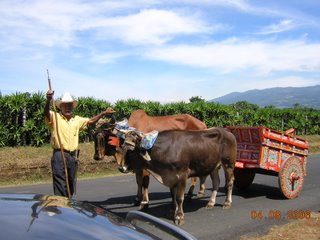

One of the craters measures 1.5 kilometers in diameter (0.9 miles) and is 300 meters deep (900 feet). At the bottom of this prehistoric-looking hole, there is a medium sized lagoon, that spews boiling sulphurous gases. The other crater, called Botos Lagoon, which unlike the other lake, contains cold water that connects to the Rio Angel, and later to the large Rio Sarapiqui. The volcano has had a long history of eruptions! On January 25, 1910, the volcano spewed out 640,000 tons of ash, and in the period of 1952-1954, it bombarded nearby areas with ash and rocks. Since then, Poas has maintained a low profile, but as recently as 1989, the park was closed because of dangerous sulphurous gas emissions. Its geyser-like eruptions of muddy water and steam, have given it the reputation as the world’s largest geyser.











